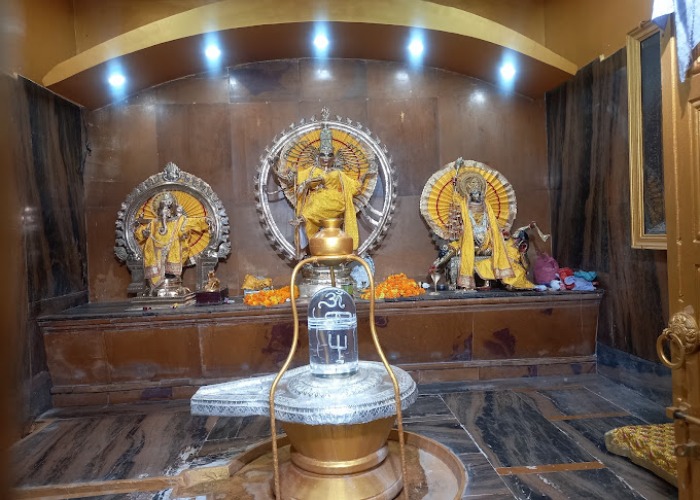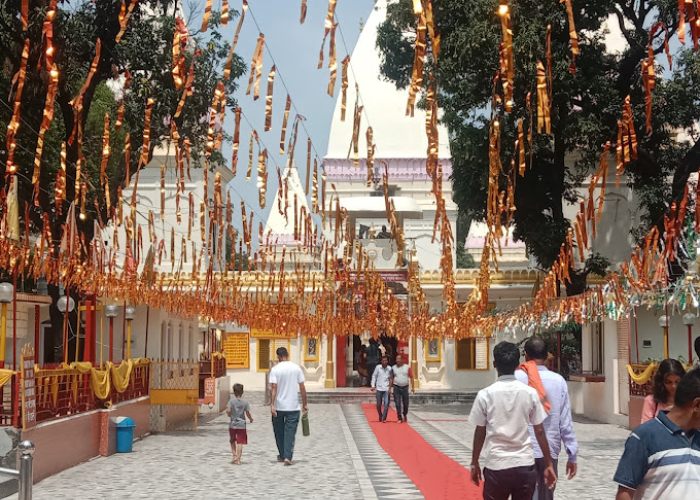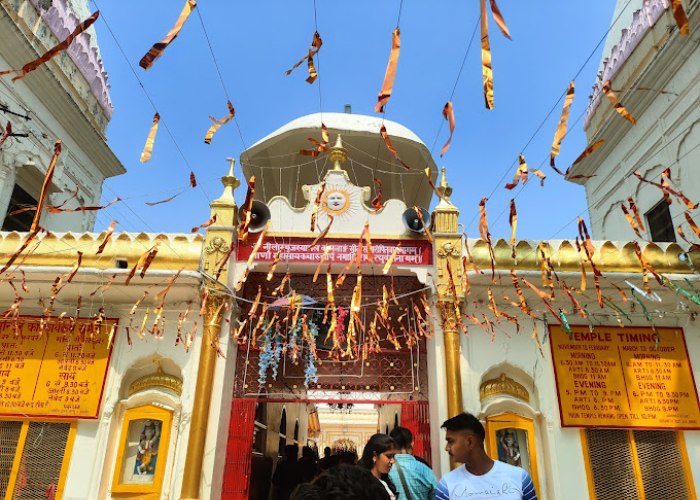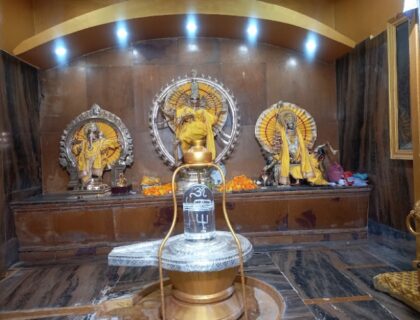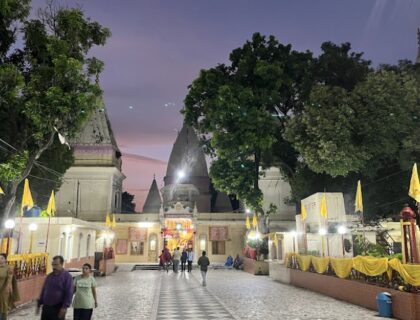Raghunath Temple Jammu
The Raghunath Temple is a Hindu temple dedicated to Lord Ram and is located in Jammu, India’s union territory of Jammu and Kashmir. It is made up of a group of seven Hindu shrines. Raghunath Temple was built in 1835 by the first Dogra ruler, Maharaja Gulab Singh, and completed in 1860 by his son, Maharaja Ranbir Singh, during Dogra rule.
The temple complex contains many shrines dedicated to various gods, but the presiding deity is Rama, also known as Raghunath, an Avatar of Vishnu. The spires of all the spiral-shaped towers are gold-plated. The massive Raghunath temple has seven lofty ‘ shikharas’, with each shrine having its shikhar. A portrait of Maharana Ranbir Singh and an image of Lord Hanuman adorn the temple’s main entrance. The central shrine is dedicated to the commanding deity, Lord Ram / Raghunath.
Significance of Raghunath Temple Jammu
The Raghunath temple has historical significance, and multiple temples surround the main temple, each dedicated to a different God or Goddess associated with the epic Ramayana. This popular Jammu temple is well-known for its depictions of Rama Leela and Krishna Leela in its beautiful paintings. According to popular legend, the temple is dedicated to Lord Rama and was originally built by Raja Jagat Singh of Kullu to atone for a major wrong he committed. According to the Ramayana, the main idol inside the temple was brought back from Ayodhya, Lord Rama’s birthplace.

The Raghunath Temple has seven shrines, each with its own “Shikhara” (which translates to “mountain peak” in Sanskrit and refers to rising towers and is a unique feature of Hindu temple architecture, particularly in northern India). This temple, located in Jammu city, has one of the largest temple complexes in North India. This temple houses several Gods, but the presiding deity is Lord Ram, who is thought to be an “avatar” or an embodiment of Lord Vishnu.
History of Raghunath Temple Jammu
After 1765, during the reign of the Jammu Shivaliks, there was a surge in temple construction activity in the Jammu area, which lasted into the early nineteenth century. The rulers constructed spiral-shaped brick temples and crowned each tower with bright Kalashas in the shape of a shikhara (rising tower). Gulab Singh, the ruler of Jammu, began one such temple complex in 1822 (1835 is also mentioned) and dedicated it to his guru Baba Prem Das. His son Maharaja Ranbir Singh completed its construction in 1860.

However, according to an inscription in Brahmic script (Takri) at the temple’s entrance, Gulab Singh and his brother Dhyan Singh are credited with constructing the temple in 1827 in honour of Mahant Jagannath.
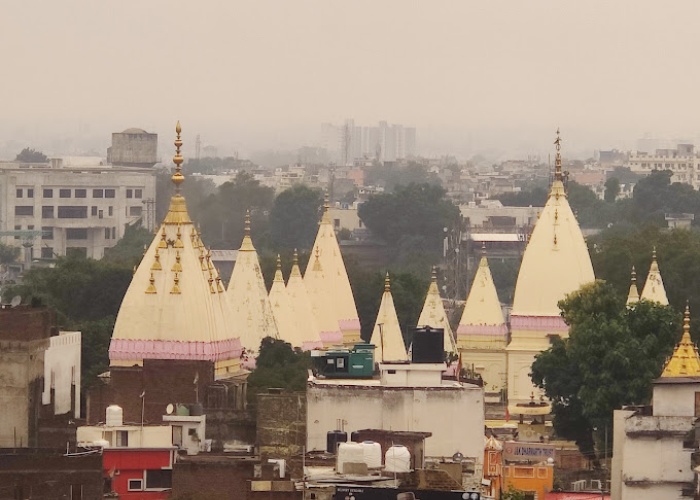
On March 30, 2002, a terrorist group launched grenade attacks in the market area before entering the temple and opening fire. They were surrounded by security forces. Ten people were killed, including four members of the security forces and two militants, and many more were injured. The second attack occurred at the temple on November 24, 2002, while Hindus were performing puja; Lashkar-e-Taiba bombers carried out this attack, and 13 devotees were killed and over 40 were injured.
The architecture of Raghunath Temple Jammu
There are seven shrines in the Raghunath temple. The temple complex is dedicated to Raghunath, another name for Rama. Surya, another manifestation of Vishnu, is depicted in the entrance. It is built in an octagonal shape on a 5-foot raised platform. The front fascia measures 40 feet wide, and the main shrine is 50 feet away from the entrance. On the eastern and northern sides of the yard’s enclosed space, there are residential buildings and open cattle yards.
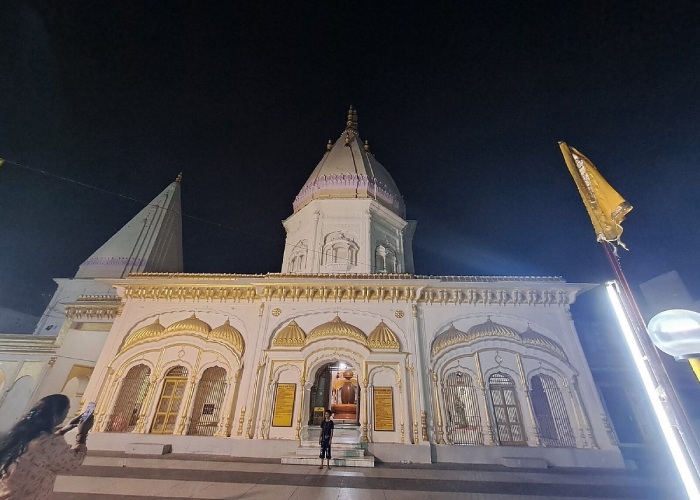
The temple’s front fascia has three entry doors. The entrance door, located on one side of the shrine’s octagonal chamber, faces east. The inner chamber’s interior is gold-plated. These interior panels contain a plethora of Jammu School paintings depicting images from the Hindu epics Ramayana, Mahabharata, and Bhagavad Gita, as represented by gods such as Ganesha, Krishna, Sheshashayi Vishnu (reclining Vishnu), and a large painting depicting the Sita Swayamvara scene (Sita choosing her husband from an elite gathering of princesses).
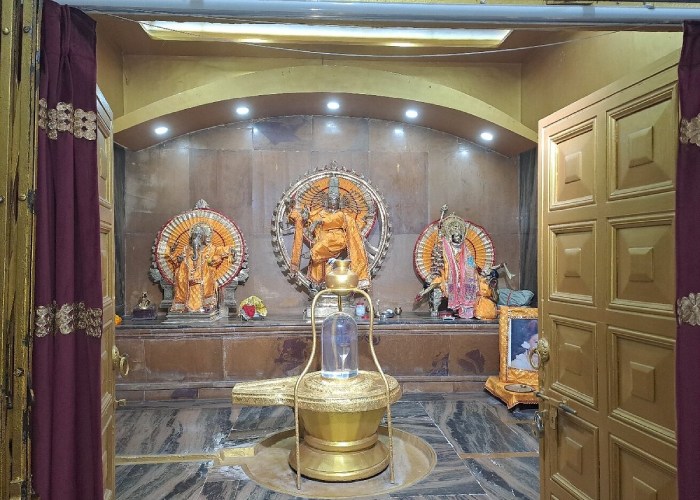
The idol of Lord Rama, the family deity of the then-king and the Dogra people, is deified in the garbhagriha (sanctum sanctorum) of the main shrine. In the Sikh architectural style, the shrine has a dome instead of the traditional shikhara in a pyramidal shape. The spires of all seven shrines are gold-plated.

The Gods and Goddesses who are enshrined in the seven shrines are all linked to the epic Ramayana. The shrines also contain a large number of Saligramas (fossil ammonite stones specifically obtained from Nepal’s Gandaki river – a Vaishnava (Hindu) aniconic representation of Vishnu).
Facts about Raghunath Temple Jammu
- Raghunath Temple is an ancient Hindu temple in Jammu City, located 10 kilometres from Srinagar Railway Station.
- This Temple is believed to be among the largest shrine complexes in North India, and it is one of the most popular places to visit in Jammu.
- Raghunath Temple is a well-known and revered shrine in the union territory of Jammu and Kashmir. The magnificent temple is dedicated to Lord Rama, who is considered to be Lord Vishnu’s eighth incarnation.
- The construction of the temple began in 1835 AD by Maharaja Gulab Singh, the founder of the Kingdom of Jammu & Kashmir, and was completed in 1860 AD by his son Maharaja Ranbir Singh.
- During Ranbir Singh’s reign, the temple was also used as a centre for Sanskrit teachings. Terrorists later attacked the temple in 2002, forcing it to close for a time. Finally, in the year 2013, the temple’s gates were reopened to devotees.
- The temple is a hybrid of Hindu and Sikh architectural styles. The temple complex is made up of seven temples, each topped with lofty spires known as shikaras.
- The temple’s presiding deity is Lord Raghunath. The other shrines, in addition to the main shrine, contain various incarnations of Lord Vishnu.
- Another noteworthy shrine of Lord Surya (Sun God) houses various forms of the Lord. Other shrines within the temple contain massive statues of Hindu gods and goddesses.
- There is also a gallery inside the temple that houses various lingams, or phallic-shaped forms of Lord Shiva, with saligrams placed on top of them.
- In addition, the temple grounds house a school and a library with over 6,000 manuscripts in various Indian languages, including a significant collection of Sanskrit manuscripts.
- The surrounding area of the Raghunath temple has breathtaking scenic beauty and a market that is a shopper’s paradise.
Famous Festivals In Raghunath Temple Jammu
- Holi – This festival is celebrated in the month of Phalgun (Feb – March). During the celebration, people celebrate with colours and enjoy the festival in the temple complex.
- Ram Navmi – Rama Navami is a Hindu festival that celebrates the birth of Rama, one the most popularly revered deities in Hinduism, also known as the seventh avatar of Vishnu.
- Diwali – Diwali is the festival of lights with its variations also celebrated in other Indian religions. It symbolises the spiritual “victory of light over darkness, good over evil, and knowledge over ignorance”.
Best Time to Visit Raghunath Temple Jammu
This place is very heavenly and spiritual, and you can visit it all year. However, the best time to visit this temple is during the monsoon and winter seasons. During the monsoon season, this location receives moderate to heavy rainfall, making it appear heavenly with its greenery and bringing freshness elsewhere.
How to Reach Raghunath Temple Jammu
The best time to visit the Temple is between September and February, and during Ramnavmi which is celebrated grandly here.
By Air: The nearest airport to Raghunath Temple is Jammu Airport which is at a distance of about 8 km from this temple.
By Rail: The nearest railway station to Raghunath Temple is Jammu Tawi railway station which is at a distance of about 3 km from this temple.
By Road: State Transport Bus services connect Jammu with Delhi and other cities. The nearest bus stand is Jammu Bus Stand which is 1 Km from the temple.
Also Read – Dwarkadhish Temple Dwarka
Location
Facilities
- Drinking Water
- Pooja Item Shops
- Prasad Shops
- Restaurants Nearby
- Resting Room



